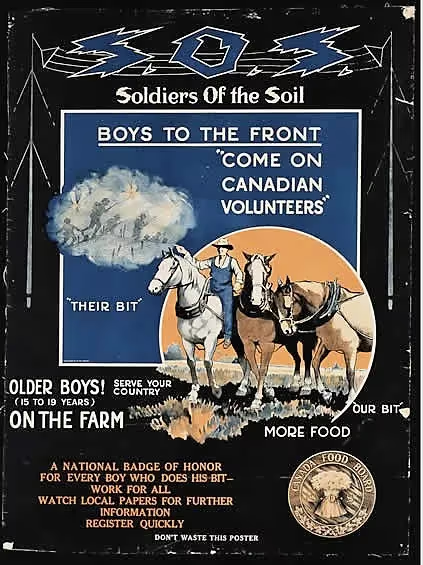Canadian Expeditionary Force (19) Garrison Regiment and Reinforcements
Garrison Regiment and Reinforcements

(York Sunbury Historical Society, Fredericton Region Museum Collection, Author Photo)
1997.28.398. 1997.28.420.
Canadian Garrison Regiment
Formed in April 1918 to perform garrison duty in Canada, the thirteen battalions absorbed the Special Service companies. There was a battalion in each of the thirteen military districts.
Reinforcements
Following the declaration of war, volunteers from all over Canada were massed for training at Camp Valcartier, Quebec, just outside Quebec City. The first contingent of30,000 volunteers, which became the 1st Canadian Division of the CEF, were grouped into numbered battalions, regardless of origin. The existing reserve regiments were not mobilized, due to the belief of the Defence Minister, Sam Hughes, that a new "efficient" structure was required.
The second contingent was more logically based on battalions raised and trained in the various military districts in which they were recruited, but remained using an impersonal numerical basis (with the exception of those with a Highland or Irish identity). A significant number of Canadian Militia units that were not sent overseas provided reinforcements to the CEF.

This poster was recruiting women for the Voluntary Aid Detachment. Although these volunteers lacked the formal medical training of nurses, they provided medical assistance to patients during the war. More than 1,800 Canadian women volunteered by the end of 1917 and at least 500 were sent overseas. (Courtesy of the Canadian War Museum, CWM 19920143-009.)

(Canadian War Museum, CWM 19890086-885)

Soldiers of the Soil, Canada Food Board.
'Soldiers of the Soil' (SOS) was a national initiative run by the Canadian Food Board. It encouraged adolescent boys to volunteer for farm service, and recruited 22,385 young men across the country. Many came from urban high schools and lived on rural farms for terms of three months or more.
Following its formation in late 1915, the Canadian Corps readied to fight major battles as a unified entity, beginning in 1916. Additional actions were fought by one or more units of the corps (see separate listings for the divisions, above). Major battles fought by the corps were the following:
1916
1917
1918
At the end of war the Canadian 1st and 2nd Divisions took part in the occupation of Germany and the corps was eventually demobilized in 1919. Upon their return home the veterans were greeted by large and welcoming crowds all across the country. Total fatal battle casualties during the war was 56,638, 13.5% of the 418,052 sent overseas and 9.26% of the 611,711 who enlisted. (Alchetron)

